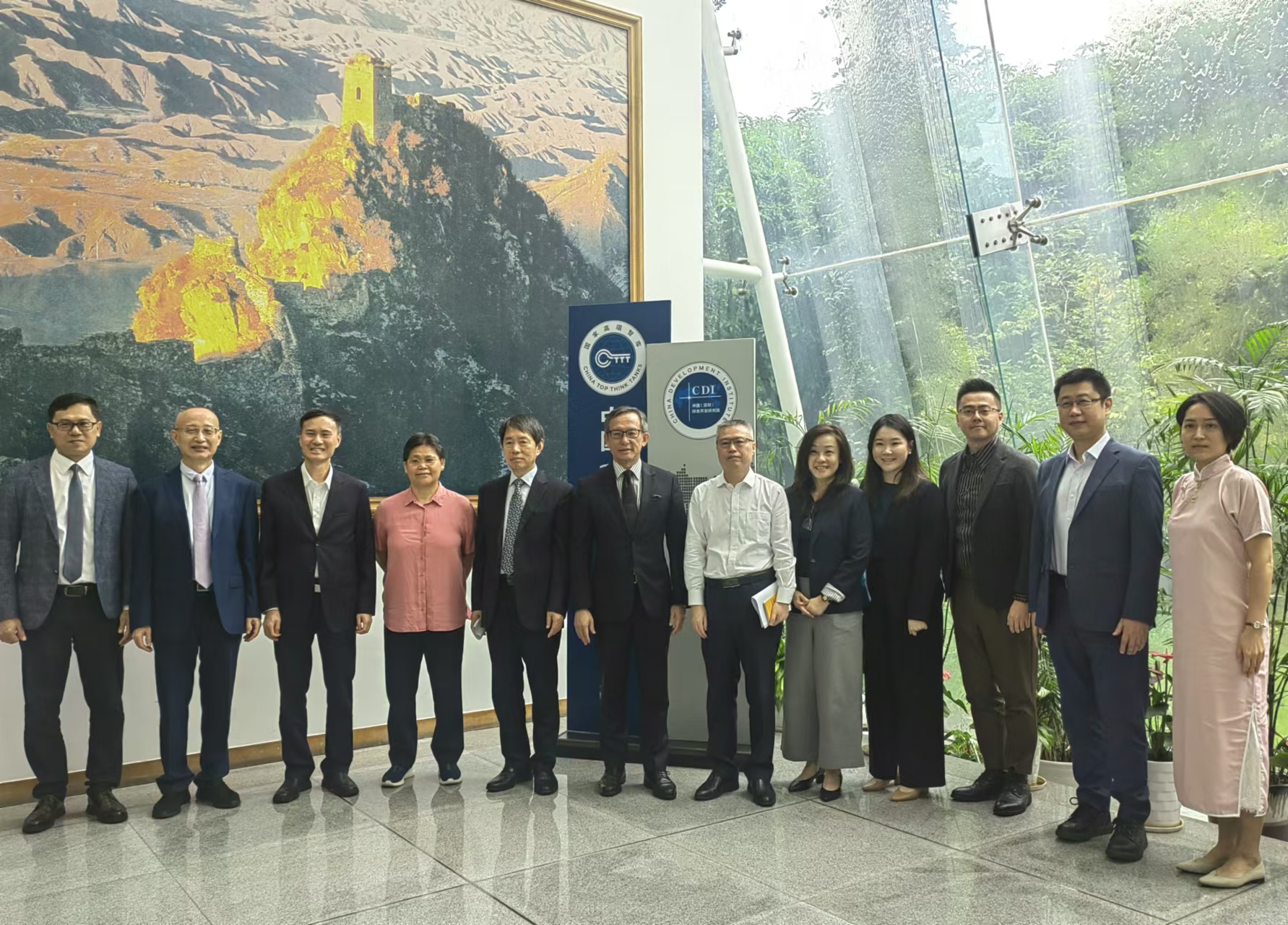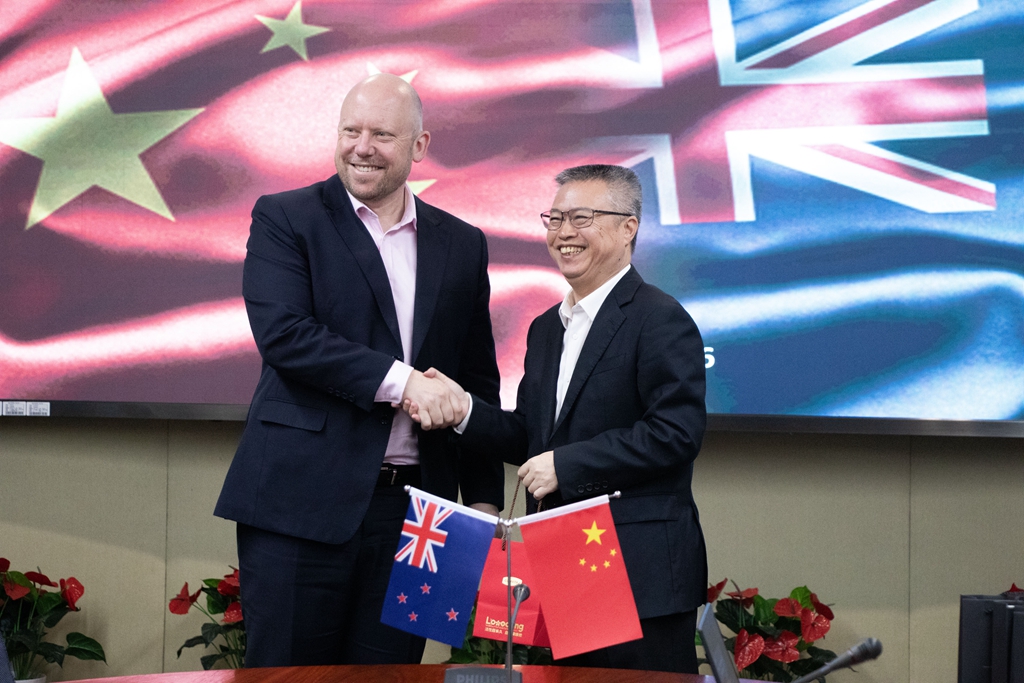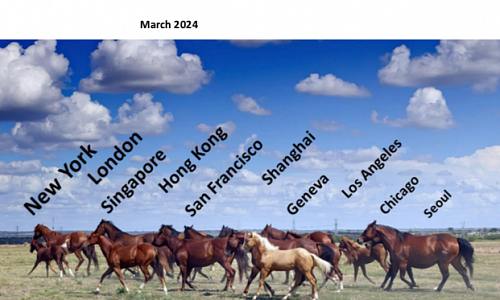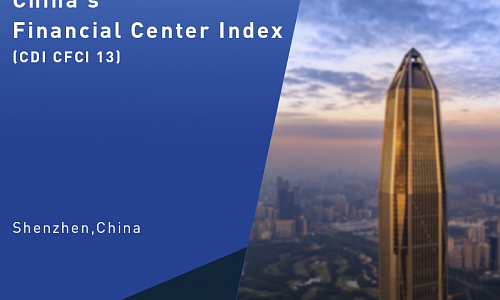President Fan Gang Spoke at World Green & Sustainability Summit, Urging Global Collaboration on Green Public Goods

Date: June 25, 2024
The 2024 World Green & Sustainability Summit held on June 25, 2024 in Penang Malaysia, organized by World Digital Chamber, World Green Organization, KSI Strategic Institute for Asia Pacific and supported by China Development Institute, convened government leaders, think tankers, and entrepreneurs from APEC countries to address strategic issues and key challenges in promoting partnership for climate action, energy transition and the business communities to pivot towards sustainable investments, green growth and green finance. In his opening speech, President of CDI Prof. Fan Gang urged collaboration on climate action and stressed the importance of green products and green technologies in contribution to sustainable growth. The summit was attended by Governor of Penang Tun Dato’ Seri Utama Ahmad Fuzi.

Financial Centre Futures Webclave 2024 - The Impact Of Digitisation
Information

Information
Z/Yen Group, in partnership with the China Development Institute, is holding a special webclave (online conclave, a private, invitation-only meeting) to bring together representatives of financial centres across the world to discuss areas of common interest and in particular the Future Of Financial Centres and Impact Of Digitisation.
The meeting is an opportunity for financial centres to share information on:
- The Impact Of Digitisation – how are digital products and services developing in your financial centre
- Future Financial Centre strategies - what is your current focus for developing your financial centre?
Date and time: 15:00-17:00 Beijing Time (GMT+8) on Thursday, 18 July 2024
CHINA-LATIN AMERICA WEBINAR Forging A New Page for Investment and Trade Ties
Information

Information
Date and time: Thursday June 27, 2024 20:00-21:30 (Beijing Time GMT+8)
Host: China Development Institute
In recent years, the relationship between China and Latin America has evolved significantly, showcasing immense potential for future growth and cooperation. China's investment focus in Latin America has also gradually extended from traditional infrastructure projects to key minerals, clean energy, biomedicine, cross-border e-commerce and other fields. As we look to the future, it’s crucial to maintain a balanced partnership between both sides. While the potential for growth and cooperation is immense, there are challenges and risks that need to be addressed to ensure the longevity and stability of this relationship.
On the occasion of 10th Anniversary of China-CELAC forum in 2024, the China-Latin America Webinar organized by the China Development Institute will convene experts to discuss dynamics, opportunities, and potential risks that arise from the investment and trade ties between China and Latin America.
Debates
- How are the opportunities and risks of economic cooperation between China and Latin America evolving; and how should they be addressed properly?
- How do you view the current changes of China's investment focus in Latin America? Which emerging industries are more likely to foster tangible cooperation?
- Tips and suggestions for Chinese companies that wish to operate in Latin America.
* Available in Chinese and English with Simultaneous Interpretation
Register in advance for this meeting. After registering, you will receive a confirmation email containing information about joining the webinar.
https://us06web.zoom.us/meeting/register/tZYuc-mqrzguGNIhfYT1hYpU9GmMGG9Rzpx7
Singapore Institute of International Affairs Delegation Visited CDI

Date: May 23, 2024
On May 23, 2024, Prof. Simon Tay led Singapore Institute of International Affairs (SIIA) delegation to CDI. Exchange surrounded topics such as new quality production forces, the Guangdong-Hong Kong-Macao Greater Bay Area (GBA), and economic cooperation prospect between ASEAN and GBA. Due to GBA’s proximity to ASEAN, trade activity between the two sides has been dynamic and continued to grow, pivoting from manufacturing to service sector. Looking forward, the bilateral trade, investment, science and technology exchange and cooperation could be further facilitated via GBA platforms.
China-Central Asia Webinar - How to Further Promote Regional Digitalization
Information

Information
Date and time: Thursday June 20, 2024 15:00-17:00 (Beijing Time GMT+8)
Host: China Development Institute
Since the turn of the millennium, digitalization has been one of the fastest-growing economic forces globally, enabling a wide range of economic activities for numerous business ventures. In recent years, Central Asian countries have embarked on the pathway towards digitalization with respective action plans. Meanwhile, China is also making progress in the digital economy. Cooperation in the digital economy is becoming a promising area for China and Central Asia to jointly build the Silk Road Economic Belt and promote the industrial upgrading and transformation within the region.
In this edition of the China-Central Asia Webinar organized by the China Development Institute, experts from China and Central Asia will come together to discuss how to further promote regional digitalization to achieve sustained economic growth for both parties.
Debates
- How do you view the potentials for digital cooperation between China and Central Asia?
- What are the main obstacles and suggested solutions in terms of China and Central Asia’s joint effort towards enhancing regional digital connectivity?
- Among the wide range of topics within the digital sphere, what are the potential areas to foster tangible cooperation projects?
* Available in Chinese and English with Simultaneous Interpretation
Register in advance for this meeting. After registering, you will receive a confirmation email containing information about joining the webinar.
https://us06web.zoom.us/meeting/register/tZEpfuqtrD4qHde6P332gpi3caE45QhwRfRT
China-France Webinar - How to Build Resilient Economic and Trade Relation
Information

Information
Date and time: Wednesday May 29, 2024 15:00-17:00 (Beijing Time GMT+8)
Host: China Development Institute
Ever since the establishment of diplomatic relations 60 years ago, bilateral trade between China and France has grown rapidly. Today, France is China's third-largest trading partner in the EU and the third-largest source of actual investment, while China is France's largest trading partner in Asia and seventh in the globe. The economic complementarity of the two countries provides a huge potential for China-France cooperation.
As we know, presently, the global economy is facing downward challenges. In face of the current complicated situation, how China and France can further coordinate and jointly build a more resilient supply chain to achieve mutually beneficial relations is the keen concern to both countries. Despite the obstacles that have arisen, opportunities can still be found to sustain economic ties between China and France.
The upcoming China-France Webinar - How to Build Resilient Economic and Trade Relation to be held on May 29, 2024 15:00-17:00 (Beijing Time GMT+8) by China Development Institute aims to provide a platform for exchanges on the way how China and France could address the cooperation and challenges ahead.
Focus for debate:
- How do you view the future potentials for trade& investment between China and France?
- How could China and France both promote high-level opening-up and better address issues relating to market access, investment rules and regulations, etc.?
- How do China and France complement each other, especially by supporting green industries and clean energy, even in the third-party market cooperation?
*Available in French and Chinese.
Register in advance for this webinar. After registering, you will receive a confirmation email containing information about joining the webinar.
https://us06web.zoom.us/meeting/register/tZMrcumvpjstHdaIsL3IXGNBJhgHUaEDNhr9
Policies and External Demand Boost Economic Improvement

Date: Apr 20, 2024
In the first quarter of 2024, the economy improved overall due to the combined effect of recovering external demand, the sustained impact of earlier policies, the timing of the Spring Festival, and changes in base figures. Major macroeconomic indicators remained generally stable, but data for March showed signs of marginal weakening compared to January and February. This weakening is partly due to the base effect but also requires close attention, indicating the need for sustained policy efforts.
Policies, among other factors, have contributed to the overall economic improvement. In the first quarter, GDP grew by 5.3% year-on-year at constant prices, accelerating compared to both the fourth quarter and the entire previous year. The secondary industry played a significant role in this growth, with industrial added value increasing by 6.0% year-on-year, and manufacturing added value rising by 6.4%. Moreover, modern service industries maintained a strong development momentum: in the first quarter, the added value of information transmission, software and information technology services, leasing and business services, and financial services grew by 13.7%, 10.8%, and 5.2% year-on-year, respectively, collectively driving a 2.7 percentage point increase in the service industry’s added value. Marginally, the composite PMI output index, the manufacturing PMI, and the non-manufacturing business activity index all rose in March compared to the previous month, and all remained above the threshold line, indicating accelerated economic expansion.
A low base and external demand have bolstered improvements in exports. In the first quarter, exports and imports, denominated in RMB, grew by 4.9% and 5.0% respectively year-on-year, marking a rebound from the previous year’s fourth quarter. Looking regionally, while growth in exports to developed economies like the United States and the European Union slowed, there was a resurgence in growth in exports to Japan, South Korea, and the Chinese Taiwan region, with a concurrent recovery in growth in exports to ASEAN countries. In terms of products, driven by the rebound in global demand and the concurrent upturn in the global semiconductor cycle, exports of computer electronics industry chain products, represented by integrated circuits and automatic data processing equipment, saw a seasonally adjusted increase. Notably, March saw increased export growth rates for mobile phones, integrated circuits, and automatic data processing equipment, sequentially boosting the overall export growth rate by 0.5, 0.3, and 0.2 percentage points respectively compared to the previous month.
The growth rate of industries above designated scale accelerated overall. In the first quarter, industries above designated scale grew by 6.1% year-on-year, marking a 0.1 percentage point increase in growth compared to the fourth quarter of the previous year, continuing the trend of recovery. Looking at the three major categories, the growth rate of manufacturing increased by 0.4 percentage points to 6.7% compared to the fourth quarter of the previous year, while the growth rate of electricity, heat, gas, and water production and supply increased by 0.5 percentage points to 6.9%, both being the main drivers behind industrial recovery. Influenced by factors such as the timing of the Spring Festival and slow resumption of infrastructure and construction activities, the capacity utilization rates of industry and manufacturing fell to 73.6% and 73.8%, respectively, in the first quarter.
Policies, among other factors, have contributed to the rebound in investment growth. In the first quarter, the year-on-year growth rate of investment accelerated by 0.3 percentage points to 4.5%, compared to January and February, and increased by 1.5 percentage points compared to the previous year. Investment growth excluding real estate, however, reached 9.3%, highlighting the continued significant impact of real estate on investment growth. With the impact of policy support and other factors, investment growth in the high-tech manufacturing sector accelerated by 0.8 percentage points to 10.8% year-on-year in the first quarter, compared to January and February, and in turn drove investment growth in manufacturing to 9.9%.
Overall, consumer spending growth remained relatively stable in the first quarter. Total retail sales of consumer goods grew by 4.7% year-on-year, indicating slight slowing trends. As consumption policy measures were implemented, consumer potential accelerated, and commodity consumption steadily rebounded. Sales of essential goods were robust, with retail sales of grain and oil products and beverages increasing by 9.6% and 6.5% respectively. From a marginal perspective, the year-on-year growth rate of total retail sales of consumer goods slowed significantly to 3.1% in March, possibly due to a higher base last year. Meanwhile, rapid growth in consumption of travel and entertainment-related services continued to drive consumer spending.
Shenzhen Exemplifies Rapid Economic Rise on The Back of Tech Innovation

Author: Fan Gang, President of CDI and Cao Zhongxiong, Assistant President of CDI.
As a special economic zone and a city blossoming on science and technology, Shenzhen, in South China’s Guangdong Province, is not only an economic front-runner, but also a great “mirror” illustrating China’s quick pace of technology innovation and economic development.
The development of Shenzhen has been subject to questioning on many occasions in the past decades, but the city has always responded by ironing out the doubts through its rapid development in both headwinds and tailwinds.
Shenzhen represents new quality productive forces, new systems, as well as birth of new and creative policies. It is the best window to observe the transformation of China’s economic development. A more in-depth examination of Shenzhen’s economic growth can offer proof of the stable and high-quality development of China.
Shenzhen’s rapid rise demonstrates the strength of China’s ability to achieve quality breakthroughs in its economic development, reinforcing public confidence in the country’s economic creativity and capability.
Despite the challenges posed by the lackluster global economy and an increasingly complex and uncertain world environment, China’s economy managed to achieve 5.2 percent growth in 2023. During the same period, Shenzhen’s local GDP reached 3.46 trillion yuan ($480 billion), representing a 6 percent year-on-year increase, ranking first among the first-tier cities in China, outpacing the growth of Beijing, Shanghai and Guangzhou.
In 2023, Shenzhen’s strong retail sector has become a major new driving force for economic growth. Total retail sales of consumer goods reached 1.05 trillion yuan last year, an increase of 7.8 percent over 2022, officially entering the club of Chinese cities with one-trillion-yuan consumption.
From the perspective of industrial structure, Shenzhen regards the development of strategic emerging industries and the cultivation of future industries as important levers to accelerate the formation of new quality productive forces, and coordinates the construction of industrial clusters with advanced manufacturing as its backbone.
By 2023, the strategic emerging industries in Shenzhen have achieved an added value of 1.45 trillion yuan, accounting for 41.9 percent of the city’s GDP, with a year-on-year growth of 8.8 percent. In terms of the emerging industries, Shenzhen dares to make forward-looking layouts in cutting-edge technology innovation.
New technologies are broadly utilized in Shenzhen, helping form new industries in China. Shenzhen-headquartered company BGI Genomics has been leading in the global genetic technology field. Tencent, a Fortune Global 500 company, has played a significant role in promoting the development of China’s digital economy. DJI has gone from Shenzhen to the global market, promoting the development and growth of China’s drone industry.
The sustained economic growth of Shenzhen highlights the significant potential of China’s economy, reflecting the promising prospects for continued growth and ongoing improvement in China’s future development.
Innovation is the primary driving force behind Shenzhen’s rise, serving as the lifeblood of the city. Innovation is a defining characteristic of Shenzhen, playing a vital role in its development. Similarly, innovation is essential for the progress of China’s overall economy. More emphasis should be put on technological innovation on the national level, fostering new quality productive forces.
Eyeing high-quality development, Shenzhen is making great efforts to construct an industrial technology innovation center, playing the role of the leading incubator for Chinese technological advancement, and serving China’s future development.
Now, China has a number of emerging technology-heavy cities with development advantages such as Dongguan in South China’s Guangdong Province, Suzhou in East China’s Jiangsu Province, and Qingdao in East China’s Shandong Province. These cities are actively supporting technological innovation, the growth of private sector, and the cultivation of new quality productive forces, which will further stimulate the vitality and momentum of China’s development.
China’s economy is experiencing a period of steady recovery and a structural adjustment, with sufficient potential for endogenous dynamism and a large room for continued growth. As long as China focuses on solving all the problems in the course of its development, adheres to openness and high-value innovation, and continuously develops new quality productive forces, there is no reason why the Chinese economy will “peak” any time soon.
Giant Ship of China’s Economy Cruises Steadily, Defying ‘Peak’ Hype

Author: Cao Zhongxiong, Assistant President of CDI.
Despite the challenges posed by the lackluster global economy and an increasingly complex, severe, and uncertain external environment, China’s economy managed to achieve 5.2 percent growth in 2023. This growth contributed over 30 percent to global economic growth, solidifying China’s role as a crucial engine for global economic expansion. China’s economy, which is pushing over risks and challenges, has maintained steady growth in terms of quantity and scale.
In the face of multiple challenges, China successfully exceeded its annual growth target of around 5 percent set by the Government Work Report for 2023, further enhancing its status as one of the world’s top economies. In comparison with other major economies, China’s growth outpaced the 2.5 percent of the US, the 0.5 percent of the EU, and the 1.9 percent of Japan.
Economic development should not only be assessed based on quantity, but also on the quality of structural improvements. China’s high-tech industries are at the forefront of driving economic growth. In 2023, investment in technological transformation of manufacturing increased by 3.8 percent compared with the previous year, leading to a rise in the proportion of high-tech manufacturing to 15.7 percent and equipment manufacturing to 33.6 percent in the value-added industrial output.
China has maintained the fastest growth in the world ten or twenty years ago. The world has been accustomed to China’s fast growth, thinking that only fast growth is natural for China. However, it should be recognized that the Chinese economy has long surpassed the threshold of 100 trillion yuan, which is the sum of Germany, Japan, India, the UK, and Italy. Entering a new stage of high-level and high-quality development, for the 100 trillion yuan-level Chinese economy, simply observing growth rate is one-sided and biased.
Currently, the giant ship of China’s economy needs to cruise at a steady pace. Its growth rate, whether too fast or too slow, is not conducive to high-quality economic development. Issues such as insufficient consumption momentum, debt risks in the real estate sector, and hidden debts at the local level still exist.
Overall, the favorable conditions for China’s development are stronger than the unfavorable factors. The basic trend of economic recovery and improvement will not change over the long term, combined with the confidence and determination for China’s development which will remain into the future. In the current transition from old to new driving forces, stability is particularly important.
Although the current global situation is constantly changing and factors that are not conducive to globalization and economic growth are increasing, China still insists on new levels of development. This has always been China’s commitment to the world’s development.
China is actively exploring in the fields of technological innovation, development of private economy, and cultivation of new quality productive forces, which will stimulate the vitality and momentum of China’s development. The Chinese economy is in a period of steady recovery and key structural adjustment. With ample potential for continued growth, the economy is not “peaking” as Western media hyped.
To observe China’s economic growth and high-quality development, one needs to look at it with a developmental perspective. China is a super large single market, and urbanization is still in progress. China has a complete industrial chain and supply chain system, and has crossed the critical point of mid-term industrialization development. Looking across the world, there are hardly any other major countries that simultaneously meet these features. In this sense, for a considerable period of time in the future, China’s crucial role in the world economy will not be replaced.
New Zealand Ambassador to China H.E. Grahame Morton Visited CDI

Date: Mar 26, 2024
On March 26, 2024, New Zealand delegation led by H.E. Ambassador Grahame Morton visited CDI. The visit sparked in-depth discussions on various topics, including economic policies concerning the Guangdong-Hong Kong-Macao Greater Bay Area (GBA), development progress of the GBA, and cross border industrial cooperation within the GBA. CDI experts introduced the latest trends of Hong Kong-Shenzhen Innovation and Technology Park (HSITP) located in the Lok Mak Chou Loop sitting on the Hong Kong-Shenzhen border. With preferential policy incentives in place, the HSITP will greatly facilitate the cross-border flow of production resources including capitals, talents and data. In the meanwhile, Shenzhen is becoming the forefront of reform and opening-up with the digital upgrading of traditional industries and the expansion of emerging industries. Both sides agree that China and New Zealand should explore cooperation projects in areas such as digital economy, digital trade and artificial intelligence.








